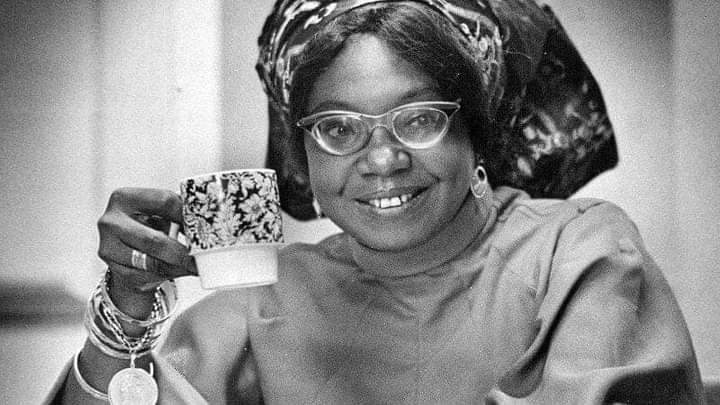For decades, African literature was dominated by male voices and male-centered narratives. The earliest celebrated works—by writers like Chinua Achebe, Wole Soyinka, and Ngũgĩ wa Thiong’o—focused largely on colonialism, politics, and masculinity. Women were present, but often peripheral: mothers, lovers, symbols of tradition or temptation.
But in the past three decades, the African female protagonist has undergone a remarkable evolution—from shadowy background figure to fully realized, emotionally complex character. Today, she is no longer simply written about; she writes herself into existence.
Contemporary African literature, shaped by the likes of Chimamanda Ngozi Adichie, Tsitsi Dangarembga, Sefi Atta, Noviolet Bulawayo, and Leila Aboulela, has ushered in a new era—one where the African woman speaks, dreams, rebels, fails, and thrives on her own terms.
A Look Back: The Archetype of the African Woman in Early Literature
In early post-colonial African novels, women often functioned as extensions of the male character’s journey or political vision. For example:
- In Achebe’s Things Fall Apart (1958), women were largely silent, their roles limited to that of wives, mothers, or oracles.
- Ngũgĩ wa Thiong’o’s A Grain of Wheat (1967) offers deeper female characters, but still filters them through male-centered narratives.
These portrayals weren’t always harmful—but they were limiting. The woman existed, but seldom lived in fullness on the page.
This reflected broader societal dynamics. Women in many African societies were expected to be “custodians of culture,” preserving traditions while staying in the margins. Literature mimicked life—and often, it confined it.
The Turning Point: Writing from the Margins
By the 1980s and 1990s, female writers began to claim space more deliberately. Buchi Emecheta’s The Joys of Motherhood (1979) stands as a watershed moment. Her protagonist, Nnu Ego, is not heroic in the traditional sense—she suffers, is flawed, and ultimately ends her life in obscurity. But she is real.
Emecheta broke with romanticized notions of motherhood and womanhood, showing instead the emotional and social toll of being an African woman caught between tradition and change.
Similarly, Tsitsi Dangarembga’s Nervous Conditions (1988) introduced us to Tambu, a girl who hungers for education and freedom in a patriarchal society. Tambu is not passive; she questions, resists, and challenges structures that hold her back.
These works planted the seeds for a new kind of African female protagonist: one who does not simply endure, but interrogates her world.
Chimamanda Ngozi Adichie and the Global Mainstreaming of African Womanhood
No conversation about the modern African female protagonist is complete without Chimamanda Ngozi Adichie.
With Purple Hibiscus (2003), Adichie gave us Kambili, a shy and emotionally stunted teenage girl living under the shadow of her abusive, devout father. Through Kambili’s eyes, readers saw a world of both tenderness and terror. Her silence spoke volumes.
Then came Half of a Yellow Sun (2006), where Olanna and Kainene—sisters navigating love, war, and betrayal—were bold, sexual, ambitious, and flawed. These were not just African women—they were people.
By the time Americanah (2013) arrived, Adichie had reshaped the literary terrain. Ifemelu, the protagonist, was confident, sharp-tongued, politically aware. She moved between Nigeria and the United States, critiquing both cultures with equal audacity. She wore natural hair. She blogged. She felt no need to be “likable.”
Adichie’s women weren’t revolutionary because they were perfect—they were revolutionary because they were real.
The Diaspora and the Interior Life
Contemporary African literature has also explored the interior lives of African women in the diaspora.
Writers like Leila Aboulela (Minaret, The Translator) and Taiye Selasi (Ghana Must Go) portray African women negotiating multiple identities: racial, religious, cultural, and generational. These characters are often not caught between “Africa and the West,” but rather moving within a spectrum of selves.
Their inner struggles—loneliness, longing, alienation—take center stage. They are not defined by conflict alone but by nuance.
In Noviolet Bulawayo’s We Need New Names (2013), Darling, a Zimbabwean girl who migrates to the U.S., becomes a vessel for exploring the brutal ruptures of displacement. Her girlhood is not exoticized; it is tender, painful, and ordinary.
This emphasis on the emotional and the interpersonal—on therapy, sexuality, body image, depression, friendship—marks a new frontier in African storytelling.
Feminism and Its Local Meanings
One of the most powerful shifts in the African female narrative has been the mainstreaming of feminist themes—without apology.
But this feminism isn’t a Western import; it is culturally rooted and often challenges both colonial and traditional patriarchy.
Books like:
- Ayọ̀bámi Adébáyọ̀’s Stay With Me (2017), which portrays a woman caught in the anguish of infertility and polygamy.
- Imbolo Mbue’s Behold the Dreamers (2016), which reveals the exploitation and invisibility of immigrant women in the U.S.
- Chinelo Okparanta’s Under the Udala Trees (2015), a groundbreaking lesbian love story set in post-civil war Nigeria.
These works challenge the notion that African women’s stories must be palatable or “safe.” They insist on the right to complexity, to pain, to pleasure.
The Age of Young Adult and Popular Fiction
In recent years, African female protagonists have begun to populate genres long considered “non-literary”—young adult (YA), fantasy, romance.
Writers like Tomi Adeyemi (Children of Blood and Bone) and Nnedi Okorafor (Who Fears Death) bring magic, mythology, and Afrofuturism into play. Their heroines wield swords, spells, and ancestral power.
Meanwhile, authors like Lola Shoneyin (The Secret Lives of Baba Segi’s Wives) and Damilare Kuku (Nearly All the Men in Lagos Are Mad) bring humor and satire to the portrayal of African women navigating relationships and respectability.
The African female protagonist now exists across genres, from historical epics to Instagram microfiction.
As African literature increasingly makes its way to the screen (Netflix’s Blood Sisters, Amazon’s Aníkúlápó, the upcoming adaptation of Americanah), the presence of the African female lead is reshaping visual storytelling as well.
These characters are no longer sidekicks. They carry narratives, influence pop culture, and inspire real-world conversations.
The protagonist is not merely written—she is watched, heard, followed, and imitated.
The Future Is Already Here
The African female protagonist has arrived—and she’s not going anywhere. She is not waiting for permission to speak, and she is not limited to tales of suffering. She tells stories of joy, rest, rebellion, quietness, desire, madness, and healing.
She may be a Lagos lawyer, a Somali refugee, a Malawian teenager, or a Sudanese housewife. But she is whole. She is the subject—not the object—of the narrative.
As readers, we are fortunate to witness this transformation. As a continent, we are richer for it.
Recommended Reads for Further Exploration:
- The Joys of Motherhood by Buchi Emecheta
- Nervous Conditions by Tsitsi Dangarembga
- Stay With Me by Ayọ̀bámi Adébáyọ̀
- We Need New Names by Noviolet Bulawayo
- Under the Udala Trees by Chinelo Okparanta
- Children of Blood and Bone by Tomi Adeyemi
- Nearly All the Men in Lagos Are Mad by Damilare Kuku

